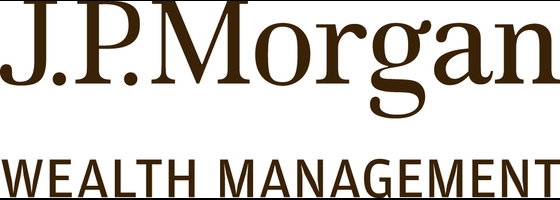- Diversification
- Low costs
- Relatively low risk
- Long-term performance
- Some index funds pay dividends
Our evaluations and opinions are not influenced by our advertising relationships, but we may earn a commission from our partners’ links. This content is created independently from TIME’s editorial staff. Learn more about it.
An index fund bundles individual securities into a single investment that tracks the performance of a specific market index as closely as possible. The best index funds can diversify your investment portfolio while minimizing fees and risk.
Here are 10 index funds to consider if you're looking for steady, low-cost growth.

J.P. Morgan Self Directed Investing
J.P. Morgan Self Directed Investing
$0 stock & ETF trades.
$0.65/contract options trades.
$0 mutual funds trades.
Disclosure
INVESTMENT AND INSURANCE PRODUCTS ARE: NOT A DEPOSIT • NOT FDIC INSURED • NO BANK GUARANTEE • MAY LOSE VALUE
Best index funds to invest in 2024
1. Shelton Nasdaq-100 Index Investor (NASDX)
- Expense ratio: 0.52%.
- Morningstar rating: 5/5 stars.
- Total assets: $1.7B.
- TTM yield: 0.39%.
- Total five-year return: 21.18%.
NASDX is a large growth fund that invests in the biggest domestic and international non-financial companies listed on the Nasdaq exchange. Launched in early 2000, the fund has a minimum initial investment of $1,000.
The fund can be purchased directly from the fund company or through our recommended online broker.
2. Victory Nasdaq-100 Index Fund (USNQX)
- Expense ratio: 0.45%.
- Morningstar rating: 5/5 stars.
- Total assets: $5.7B.
- TTM yield: 0.56%.
- Total five-year return: 21.00%.
USNQX is a large growth fund that seeks to match the performance of the stocks composing the Nasdaq-100 Index. The fund was founded in late 2000 and has a minimum investment of $3,000.
The fund can be purchased directly from the fund company or through our recommended online broker.
3. VALIC Company Nasdaq-100 Index Fund (VCNIX)
- Expense ratio: 0.44%.
- Morningstar rating: 5/5 stars.
- Total assets: $898.4M.
- TTM yield: 0.23%.
- Total five-year return: 20.85%.
VCNIX is a large growth fund that seeks long-term capital growth by investing in stocks that are included in the Nasdaq-100 Index. The fund has been around since late 2000, and there's no minimum investment requirement.
The fund can be purchased directly from the fund company or through our recommended online broker.
4. Voya Russell Large Cap Growth Index Portfolio (IRLSX)
- Expense ratio: 0.68%.
- Morningstar rating: 5/5 stars.
- Total assets: $1.6B..
- TTM yield: 0.21%.
- Total five-year return: 19.32%.
IRLSX invests in large-cap U.S. growth stocks and seeks to track the performance of the Russell Top 200 Growth Index. Formed in 2009, the fund has no investment minimums.
The fund can be purchased directly from the fund company or through our recommended online broker.
5. Fidelity Series Large Cap Growth Index Fund (FHOFX)
- Expense ratio: 0.00%.
- Morningstar rating: 5/5 stars.
- Total assets: $1.0B.
- TTM yield: 0.83%.
- Total five-year return: 18.63%.
FHOFX invests at least 80% of its assets in companies with large market capitalizations in the Russell 1000 Growth Index. The fund was launched in late 2018, making it a relative newcomer. There's a $0 investment minimum and a 0.00% expense ratio, making it the cheapest fund on our list.
The fund can be purchased directly from the fund company or through our recommended online broker.
6. Fidelity Large Cap Growth Index Fund (FSPGX)
- Expense ratio: 0.035%.
- Morningstar rating: 5/5 stars.
- Total assets: $19.3B.
- TTM yield: 0.73%.
- Total five-year return: 18.63%.
FSPGX is a large growth fund investing at least 80% of its assets in Russell 1000 Growth Index companies. The fund was founded in 2016 and has zero investment minimums.
The fund can be purchased directly from the fund company or through our recommended online broker.
7. Schwab U.S. Large-Cap Growth Index Fund (SWLGX)
- Expense ratio: 0.035%.
- Morningstar rating: 5/5 stars.
- Total assets: $1.7B.
- TTM yield: 0.67%.
- Total five-year return: 18.7%.
SWLGX invests at least 90% of its net assets in securities included in the Russell 1000 Growth Index. The fund was started in late 2017, and there are no minimums to invest.
The fund can be purchased directly from the fund company or through our recommended online broker.
8. Fidelity U.S. Sustainability Index Fund (FITLX)
- Expense ratio: 0.11%.
- Morningstar rating: 5/5 stars.
- Total assets: $3.0B.
- TTM yield: 1.12%.
- Total five-year return: 15.45%.
FITLX is the only fund on our list that tracks the MSCI USA ESG Index, which represents the performance of stocks of large- to mid-cap U.S. companies with high environmental, social, and governance (ESG) performance relative to sector peers. The fund was founded in early 2017 and there are no minimums to invest.
The fund can be purchased directly from the fund company or through our recommended online broker.
9. Fidelity 500 Index Fund (FXAIX)
- Expense ratio: 0.015%.
- Morningstar rating: 5/5 stars.
- Total assets: $471.9B.
- TTM yield: 1.45%.
- Total five-year return: 14.93%.
FXAIX is a diversified domestic large-cap equity fund that seeks to closely track the returns and characteristics of the S&P 500 Index. The fund launched in early 1988, and there are no minimums to invest.
The fund can be purchased directly from the fund company or through our recommended online broker.
10. Schwab S&P 500 Index Fund (SWPPX)
- Expense ratio: 0.02%.
- Morningstar rating: 5/5 stars.
- Total assets: $81.2B.
- TTM yield: 1.43%.
- Total five-year return: 14.90%.
SWPPX tracks the total return of the S&P 500 Index, investing in some of the most well-known U.S.-based companies. The fund has been around since 1997 and has no investment minimums.
The fund can be purchased directly from the fund company or through our recommended online broker.
Methodology
To compile our list of the 10 best index funds, we used data from Morningstar, an investment research and financial services firm. We started with Morningstar's U.S. Index Funds pick list, which includes top-rated domestic passive funds from small-, mid-, and large-cap categories.
Next, we narrowed the list by focusing on funds with a 5-star Morningstar rating and ranked them based on their 5-year total returns. All the funds on our list have a Morningstar Gold, Silver, or Bronze rating, meaning Morningstar analysts expect the fund to outperform over a complete market cycle of at least five years.
How to select the best index funds
If you think an index fund might be suitable for your portfolio, here are a few factors to consider before you invest:
- Market exposure: The most popular index is the S&P 500 index, but index funds track dozens of other indexes. Choose an index that offers the market exposure you want, then focus on funds that track the index.
- Management expense ratio (MER): The management expense ratio represents the annual cost of owning the fund. Index funds generally have lower MERs than mutual funds; some even charge zero fees. Once you choose an investment category (e.g., an S&P 500-tracking fund), focus on funds with the lowest expense ratios. Of course, a higher expense ratio can be worth it if the fund's performance justifies the costs.
- Long-term performance: A fantastic 1-year return doesn't guarantee a fund will perform well in the future. A better gauge is the fund's long-term performance, so plan on reviewing at least five to ten years of returns.
Alternatives to index funds
Exchange-traded funds (ETFs) are a good option if you like an index fund's diversification but prefer an investment you can buy and sell during the trading day (index mutual funds are bought and sold once daily). ETFs may also have lower minimum initial investments than index mutual funds, making them a great alternative if you want to invest smaller amounts.
What are index funds?
An index fund is a basket of stocks that seeks to mirror the performance of a specific market index. The most popular index funds track the S&P 500, which includes 500 of the top companies in leading industries of the U.S. economy. Other common benchmarks include the Russell 2000, Dow Jones Industrial Average (DJIA), Nasdaq 100, MSCI EAFE Index, and the Wilshire 5000 Total Market Index.
How do index funds work?
Index funds offer low costs, broad diversification, and attractive returns, making them a good option for investors interested in a simple, low-cost investment.
Rather than hand-selecting investments, index fund managers buy all (or a sample of) the securities in an underlying index. For this reason, index funds are considered a passive management strategy. The goal is to match the index's performance as closely as possible—so by design, index funds can't outperform the market. However, it's worth noting that, historically, index funds consistently outperform actively managed mutual funds in the short term and over the long run.
Pros and cons
Pros:
Cons:
- Can’t outperform the market
- Moderate annual returns
- No control over fund composition
- Little downside protection during bear markets
How to invest in an index fund
Once you choose an index fund, you'll need a brokerage account that allows you to buy and sell shares of the fund you want. Brokerage firms like TradeStation, Robinhood, and Public generally have a large selection of index funds, some of which can be traded with zero transaction fees.
If you prefer to have assistance, consider opening an account with a robo-advisor that uses algorithms to build portfolios based on your financial goals, risk tolerance, and time horizon. Robo-advisors like M1 Finance offer index funds from major fund families, including Schwab, Fidelity, and Vanguard.
Consider working with a financial advisor, such as J.P. Morgan Personal Advisors, for more guidance. In addition to investment advice, many financial advisors offer services like estate, retirement, and tax planning to help grow and protect your wealth.
WiserAdvisor offers an online matching tool to help you find the best advisor for your needs and goals.

Find the right financial advisor with WiserAdvisor
Find the right financial advisor with WiserAdvisor
Alternatively, you can open an account directly with the fund company offering the index fund you're interested in.
TIME Stamp: Index funds offer low-cost diversification, but they aren't risk-free
Like any investment, index funds involve risk. Generally, an index fund is subject to the same risks as the securities in the index it tracks. Index funds are also susceptible to market swings and fund managers have less flexibility than their actively managed counterparts to respond to market declines. Of course, an index fund may not perfectly track its index, especially if it invests in only a sampling of the securities in the index. Additionally, an index fund can underperform after fees, expenses, trading costs, and tracking errors impact the returns.
Before you invest, read the fund's prospectus to learn about the fees and expenses you can expect to pay, the fund's composition, the investment strategy, and the specific risks associated with the fund. That way, you'll be able to make an informed decision and, ideally, enjoy years (or decades) of reliable, low-cost growth.
Frequently asked questions (FAQs)
Why are index funds a popular investment?
Index funds are popular because they are low-cost, enable diversification, and have a long track record of generating attractive returns that outperform actively managed funds.
Legendary investor Warren Buffett has long touted index funds as a smart investment. In his 2013 shareholder letter, he said the typical investor should "own a cross-section of businesses that in aggregate are bound to do well," adding, "A low-cost S&P 500 index fund will achieve this goal."
Is now a good time to buy index funds?
Any time is good for investing in index funds when you plan to hold the fund for the long term. The market tends to rise over time, but not without some downturns along the way, thanks to short-term volatility. For this reason, index funds make the most sense if you're looking for a long-term "set it and forget it" investment. Of course, you should still keep track of your portfolio's performance and adjust as needed.
How can I diversify with index funds?
Index funds offer exposure to dozens or even hundreds of securities that make up the underlying index. For example, an S&P 500-tracking index invests in all (or a representative sample) of the 500 leading companies in the U.S. economy. As a result, index funds offer diversification in a single, convenient investment. You can diversify further by investing in multiple index funds across various asset classes, such as U.S. and international stocks, or different sectors like energy and technology.
How much do index funds cost?
Index funds have lower fees than actively managed funds, but there are costs to consider. For starters, many index funds have a minimum initial investment, anywhere from $0 to several thousand dollars. Index funds also have an expense ratio that typically falls between 0% and 0.5% (though it could be higher). The expense ratio is automatically deducted from your returns, so it's easy to miss. There's also the tax cost ratio, which measures how much the taxes you pay on distributions reduce the fund's return. A tax cost ratio of 0% means the fund had no taxable distribution, while higher numbers indicate the fund is less tax efficient.
The information presented here is created independently from the TIME editorial staff. To learn more, see our About page.

